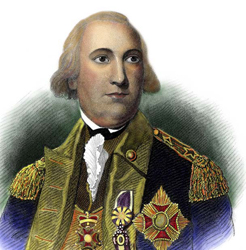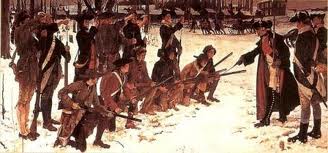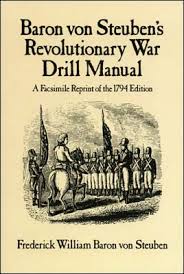DRILL HALL OF FAME
QUICK LINKS
HISTORICAL INFLUENCES
- Baron Friedrich von Steuben
- John "Black Jack" Pershing &
the Pershing Rifles
ORGANIZATIONS &
THEIR GUIDING FORCE
- The United States Army Drill Team &
(The Old Guard)
- The United States Marine Corps
Silent Drill Platoon
- Mr. Paul Naki & The King's Guard
- The National High School
Drill Team Championships &
Sports Network International
- Mr. Constantine H. Wilson &
New Guard America
SCHOOLS & INSTRUCTORS
- MGySgt Douglas Dunlapp &
Fern Creek High School
- Major Odell Graves
- CMSgt. Frank Killebrew &
Oxon Hill High School
- MSgt. Dick Lebel
- La Salle Military Academy
- Major Greg Mikesell &
Black Watch Drill Team
Winston Churchill High School
- LTC James Rose &
The Riderette Drill Team
Theodore Roosevelt High School
- SGM Johnny Snodgrass &
the Belles of the Blue Knights Drill Team
- CDR Armando Solis &
Flour Bluff High School
- MSgt. Ken Madden
INDIVIDUALS
- Abdul Al-Romaizan
- Donovan White
- 1stSgt. Christopher Borghese

|
2012 ORIGINAL INDUCTEE OF THE MILITARY DRILL HALL OF FAME
Baron Friedrich von Steuben
 Friedrich Wilhelm von Steuben entered the Prussian army in 1746 as lance-corporal. Major Friederich von Steuben became a general staff officer and aide-de-camp to Frederick the Great in 1761 during the Seven Years' War and was wounded in battle on the Russian front. Benjamin Franklin while in Europe arranged his passage to the United States to assist General Washington in training soldiers. Baron von Steuben offered his services "as a Volunteer" to the American Congress in December 1777.
Friedrich Wilhelm von Steuben entered the Prussian army in 1746 as lance-corporal. Major Friederich von Steuben became a general staff officer and aide-de-camp to Frederick the Great in 1761 during the Seven Years' War and was wounded in battle on the Russian front. Benjamin Franklin while in Europe arranged his passage to the United States to assist General Washington in training soldiers. Baron von Steuben offered his services "as a Volunteer" to the American Congress in December 1777.
To correct the existing policy of placing recruits in a unit (Regiment) before they had received training, Von Steuben introduced a system of progressive training, beginning with the school of the soldier, with and without arms, and going through the school of the regiment. This training was made more difficult by the fact that he did not speak English, so he used an aide to interpret for him. Steuben's eccentric personality greatly enhanced his mystique. In full military dress uniform, he trained the soldiers—who, at this point, were themselves greatly lacking in proper clothing—swearing and yelling at them up and down in German and French. When that was no longer successful, he recruited Captain Benjamin Walker, his French-speaking aide, to curse at them for him in English. Steuben would write out the next day's orders in German, Walker would translate them into French, and a French-speaking officer would then translate them into English.

His efforts were revolutionary however and results were quickly displayed. von Steuben required each company commander responsible for the training of new men, but actually instruction was done by selected sergeants trained by the company commander and by von Steuben, the best obtainable. Once the recruits had learned the basics, they were trained in groups of three. Next, taken separately again, each was taught "The Position of a Soldier under Arms." These basics of military drill formed the basis for every military service manual in use still today. His methods were intutive and far more simple than those in use previously.
His vital link to the Drill Hall of Fame comes from his work in military drill basics. von Steuben implemented a standard pace and cadence and drilled with great practice the soldiers were able to keep in step in a march without the use of a drum simply by watching the officer at the head of the column. His other work in bayonet training and even camp layout and order help top make the soliders better in their duties by giving them a mnore effective and orderly camp.

In 1779, Von Steuben's publication, "Regulations for the Order and Discipline of the Troops of the United States," was ready to be printed. Due to the war, however, there was a scarcity of paper. The first printer decided to bind the book with the blue paper he had on hand. This is how the book got the nickname: The Blue Book. In March of 1779, Congress endorsed it and ordered it to be used throughout the Army. Many of the state militias also adopted the Blue Book. In 1792, Washington pushed through the Uniformed Militia Act, which included the use of Von Steuben's regulations.
The Blue Book's guidelines on personnel management replaced the British model of class and station. Instead, Von Steuben melded all the ranks into a unified force, founded on an inflexible but even-handed chain of command. Von Steuben simplified his writings, putting in plain language what needed to be learned, how to teach it, and why. In very short order by the use of these techniques, U.S. Army's discipline and ability to move on the battlefield approached that of the best professional European armies.
The Blue Book remained the official guide to military training and maneuvers until it was replaced in 1812. Many of Von Steuben's writings are still in use in today's manuals, such as TC 3-21.5 Drill and Ceremony. It is hard to imagine HAVING a Drill Hall of Fame without this influential figure leading the enshrinees.
|